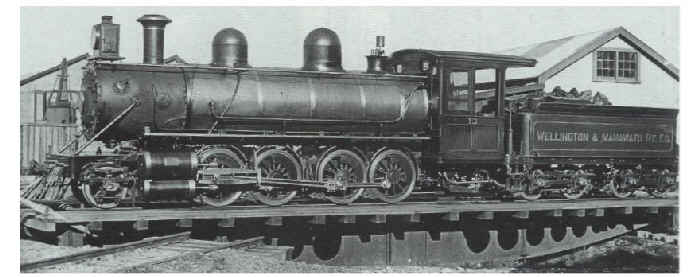Introduced: 1894
Number in Class: 1

Locomotive Specifications
|
|
| Engine Weight: 38.4 tons |
Tender Weight: 19.0 tons | Total Weight: 57.4 tons | Adhesive Weight: 33.7 tons |
| Length over Buffers: 51' 8" |
Total Wheelbase: 43' 7" | Engine Wheelbase: 19' 2" | Coupled Wheelbase: 12' 3" |
| Tender Wheelbase: 12' 9" |
Driver Wheel Dia.: 43" | Cylinders HP: Two - 11" x 20" |
Cylinders LP: Two - 18" x 20" |
| Grate Area: 16.7 sq ft | Evaporative Area: 1056 sq ft |
Superheated Area: | Working Pressure: 180 psig |
| Tractive Effort: 13600 lbs f |
Coal Capacity: 3.2 tons | Oil Capacity: | Water Capacity: 1300 gals |
| Remarks: Ordered by the Wellington and Nanawatu Railway Compnay this locomotive was the first narrow-gauge engine in the world to employ Samuel Vauclain's system of compounding. In this sytem the locomotive was fitted with two superimposed cylinders on each side, a high-pressure and a low-pressure sylinder being cast as a single unit and arranged so that both pistons were coupled to a single cross-head. On a standard gauge locomotive the large low-pressure cylinder was the lower of the two, but for low-slung narrow-gauge locomotives it was customary to reverse the order so that the smaller high-pressure cylinder would provide greater clearance from platforms and other obstructions near the ground. Ex WMRC #13 |